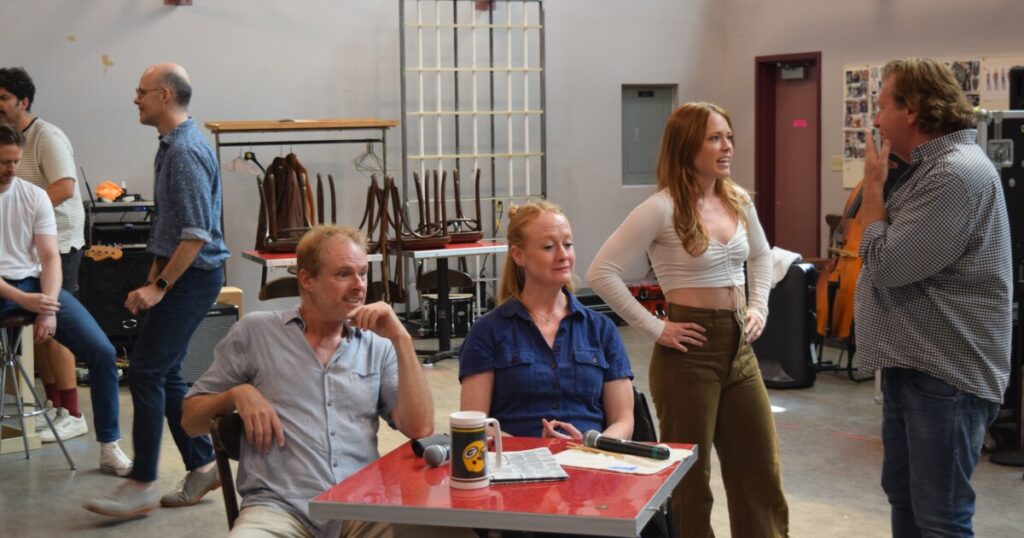Wisconsin ranks 50th in state government support for the arts, which is one of many factors contributing to the fiscal challenges performing arts groups of all sizes face. Milwaukee’s performing arts community has had a heavy reliance on philanthropic dollars for decades. But to what extent can philanthropy sustain groups that are still recovering from COVID-19 pandemic losses, inflation and an overall decline in performing arts audiences?
A new report from theWisconsin Policy Forum called “Curtain Time” assesses and responds to Milwaukee’s performing arts challenges. It also highlights some longstanding problems in the community and offers some potential solutions to make the sector more sustainable.
Wisconsin Policy Forum president Rob Henken explains more.
“So, we are blessed in Milwaukee with having a very generous philanthropic community that has really stepped up to the plate over the years in terms of its support, not only for the performing arts but for arts and culture in general. So, that’s good,” he says. “What is less good is that this reliance on philanthropy has grown over time — in particular post-pandemic.”
This dynamic is not specific to Wisconsin, but the challenges that the arts faces in Wisconsin is unique. Henken explains, “In the state of Wisconsin, we have very little public sector support for the arts. So, whereas in other cities, these gaps that exist between what needs to be spent and what can be generated from performances and philanthropy oftentimes, a chunk of that is filled by public sector contributions. Here, that’s not the case.”
One organization that continually offers support of the performing arts in Milwaukee is the United Performing Arts Fund (UPAF). Formed in 1967, the organization was originally designed to offer support to the Milwaukee Ballet, Milwaukee Symphony, Repertory Theater and the Florentine Opera. However, UPAF now supports over a dozen performing arts organizations or various sizes, and the funds are not distributed equally — which has long caused tension among local organizations.
Henken notes that this tension displays two lines of thinking: one is that large, prominent organizations need to thrive as anchors in the community. On the other hand, there’s an argument that a range of different performing arts groups also play an important role, and the funding pendulum should swing their way.
“We’re not seeing as much collaboration as perhaps we could, and that one factor there is this intense, fierce competition for these finite philanthropic resources and the UPAF dollars.”
Rob Henken, Wisconsin Policy Forum president
“[The tension] is now sort of reaching a fever pitch in part because UPAF is looking for a new executive director, and the leadership of UPAF — as well as many of its prominent corporate donors — are wanting to look at the distribution formula and whether it should be changed,” Henken notes.
The Wisconsin Policy Forum also examined the expenditure side to look for opportunities for collaboration that could result in greater efficiencies and dollar savings, such as sharing venue space, ticket sale platform, and staffing.
“While there are some notable examples of collaboration among groups … there’s also a feeling among the stakeholders that we interviewed that we’re not seeing as much collaboration as perhaps we could, and that one factor there is this intense, fierce competition for these finite philanthropic resources and the UPAF dollars,” says Henken.
The Wisconsin Policy Forum highlighted models from Pittsburgh, Cincinnati, and Kansas City that have successfully addressed similar issues in the performing arts sector to make them more sustainable. Henken says that it’s time for Milwaukee to discuss and act on similar strategies.
“One of the key problems here is who would be empowered and charged with getting all of these very proud organizations that have been around for quite some time to collectively decide on a strategic vision for the overall sector?” he notes. “This issue has been around for a while. What we are suggesting is that because of this increasing reliance on philanthropy that likely cannot continue, the time has come to try to get everybody in a room, so to speak. It’s going to have to be a big room, and it’s going to have to be a long process.”



